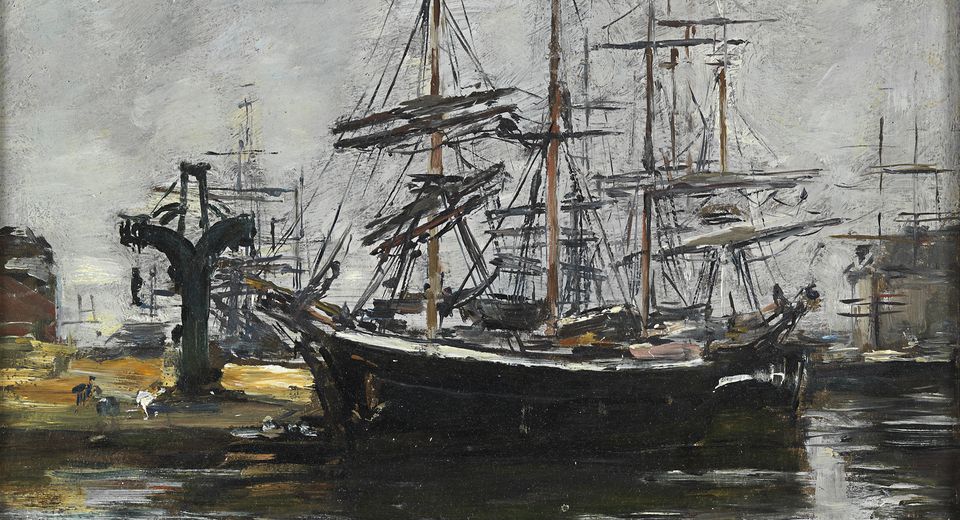Le havre, sailboats alongside the quay
Paris
Wooden oil
Moored at the quayside under a grey, vibrant sky, sailing ships await their cargo near the cranes where the men are busy. It was an everyday scene in the rapidly developing city of Le Havre at the end of the 19th century. With these Sailboats at Quay, Boudin opens a window on the activities of a new and redesigned port.
A developing port
As early as 1787, a general modernisation of the port was launched with the adoption of a development plan proposed by the engineer Lamandé (1735-1819). This work included the digging of new basins, including the Barre basin, pictured here by the painter Eugène Boudin. When it was completed in 1820, this basin was used for both merchant and military vessels, until the Arsenal was relocated in 1824. From the 1840s onwards, it was used exclusively for merchant shipping, mainly to transport cotton and timber imported from the Americas.
Despite the gradual arrival of steam power, the age of the tall ships was not yet over, and the docks were just as many forests of masts that Boudin liked to paint, before they gradually disappeared.
The painter of Le Havre
Born in Honfleur in 1824, Eugène Boudin grew up in Le Havre, where he began his apprenticeship as a self-taught painter and draughtsman. Spotted in 1851 by the Société des amis des arts, he was awarded a grant to study in Paris for three years. But back in Le Havre, his patrons were unconvinced and Boudin stagnated, torn between academicism and modernism. Amateurs and collectors in Le Havre mainly commissioned still lifes from him, the antithesis of his research and his favourite subjects. From the 1860s onwards, the artist finally found his public and commissions poured in for his depictions of the seaside, its beaches and harbours.
Although the painter had little appreciation of the hectic life in Le Havre, he devoted no fewer than 230 works to the port city, and also exhibited there regularly, notably in 1868 alongside Monet, Manet and Courbet. Acquired in 2020, this painting brings one of the most eminent marine painters and a figure of modernity into the collections of the Musée National de la Marine.
« "Although I was born in Honfleur to a seafaring father, I wouldn't be ungrateful if I forgot that it was the town of Le Havre, where I was brought up, that encouraged me and gave me board for three years". »
Collection highlight
Discover the must-see works at the Musée national de la Marine.

